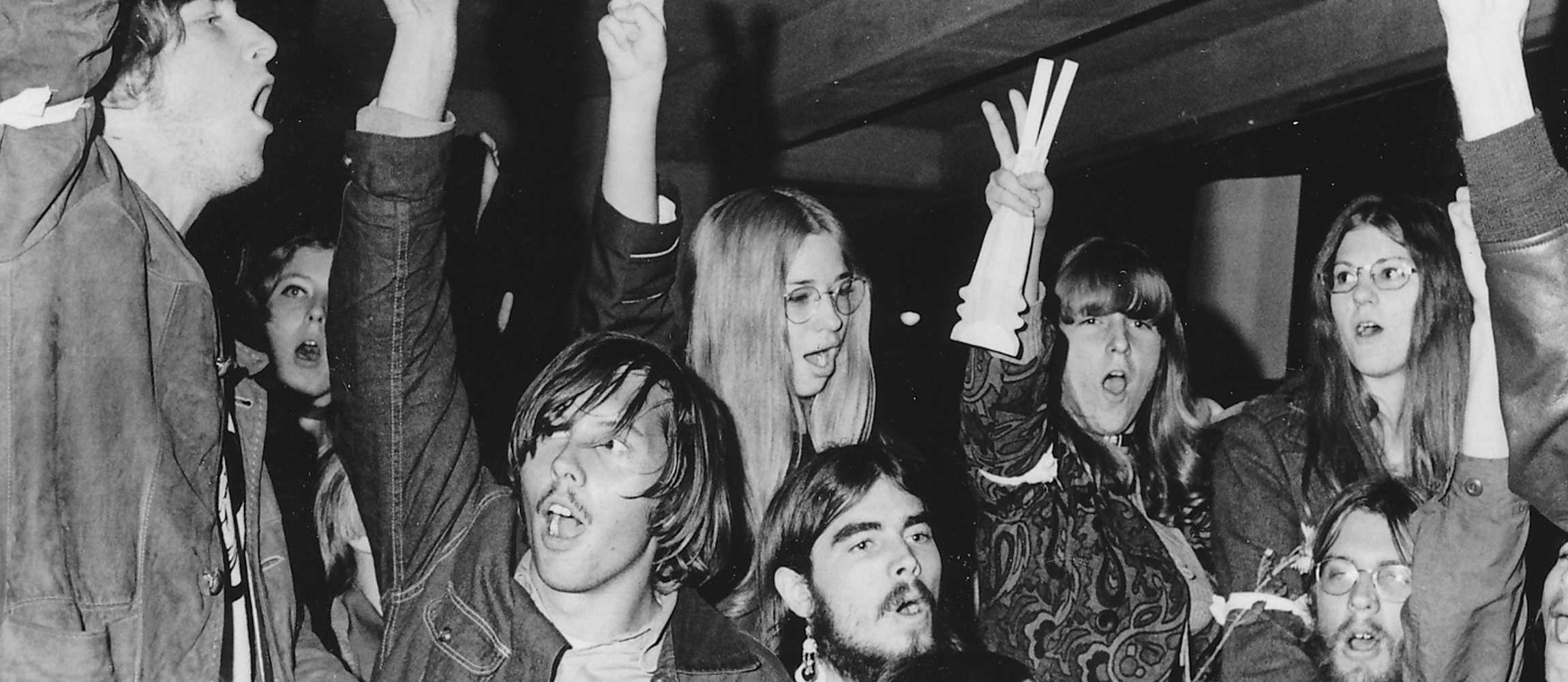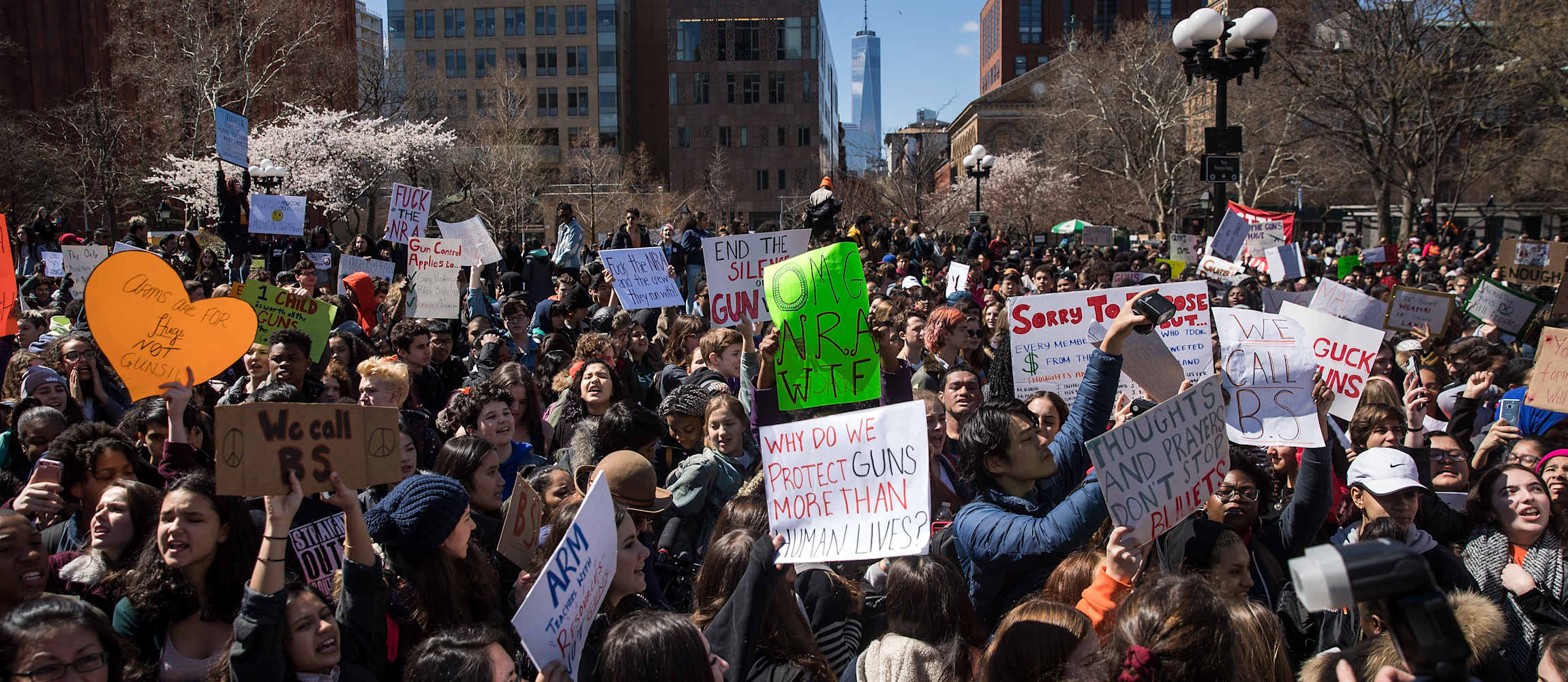Student Activism in College: A History of Campus Protests
From riots over butter to protests against tuition increases, student activists have spoken out for centuries. In fact, campus activism has played a major role in shaping higher education itself.
Generations of students have pushed for colleges to end discriminatory policies, increase campus safety, and improve student life.
Today’s challenges — like the rising cost of college and racial injustice — are driving students to mobilize.
In the past decade, the U.S. has witnessed a renaissance of student activism,
as described by The Atlantic. College students are more active than ever before, successfully fighting against tuition increases and for more equitable campus policies.
So, what lessons does the history of student activism hold for the future?
Student Protests Throughout History
In 1507, the professors at the University of Padua canceled student vacations for the celebration of Carnevale — the 16th-century equivalent of spring break. Instead of partying in Venice, students were told to attend lectures on Aristotle. In response, the students rioted, destroying lecture halls and attacking faculty members to vent their rage.
This early form of student activism apparently worked — or at least, schools didn’t try to cancel spring break again.
For centuries, student life has been a flash-point of campus activism. Only two years after the founding of Harvard College, the first class of students protested against President Nathaniel Eaton for his leadership. Specifically, they objected to Eaton’s practice of beating students as a form of discipline.
Eaton’s wife, charged with feeding the students, also faced scrutiny for her practice of servingmackerel … with their guts in them, and goat’s dung in [the] hasty pudding.
In 1639, the students successfully pushed the Eatons out in a court case.
In the Harvard Butter Rebellion of 1766, food once more became the defining issue in campus activism. Upperclassman Asa Dunbar sparked the rebellion when he leaped upon his chair in the dining hall and shouted, Behold, our butter stinketh! Give us, therefore, butter that stinketh not.
In response, students boycotted Harvard’s dining hall until the university’s president suspended half of the student body.
The Fight for Civil Rights on College Campuses
Student activists have also successfully tackled more serious issues like discrimination and equity.
Until the 20th century, many American colleges and universities enrolled only white male students. Student activists pushed colleges and universities to increase campus diversity and protect members of the school community from discrimination.
Take the civil rights movement of the 1960s, in which college students protested segregation and marched for civil rights. In 1960, four Black students from North Carolina A&T State University held a sit-in at a “whites only” lunch counter, an act that inspired thousands of students to join the civil rights movement.
Off campus, college students registered Black voters and marched on Washington; they also pushed for changes to campus policies.
During the height of student activism in the 1960s, a 1968 survey found that nearly 1 in 5 student protests demanded an end to racial discrimination on campus.
In addition to pushing for anti-discrimination policies, student activists have changed what colleges teach. At San Francisco State University, anti-racism activists in 1968 successfully pressured the administration to establish the country’s first African American studies department.
UCLA students took a similar approach in 1993, using activism to push the university to create a Chicano/a studies department.
Students Protest Administrative Policies
In the modern era, student activists demanded a voice in institutional decisions. But first, activists had to convince colleges not to treat them like children.
Before the 1960s, colleges actively governed students’ lives. Under the doctrine of in loco parentis, a Latin phrase meaning “in the place of the parent,” colleges acted as parents toward students.
This policy might have made sense in the colonial era when children as young as 12 enrolled at colleges, but in the 19th and 20th centuries, student activists readily attacked the notion that colleges should control their lives.
Student activists protested these restrictions on their freedoms, which included curfews, limits on freedom of speech, and character-building
policies. For example, in the 1860s, Wheaton College suspended a student because he joined a secret society.

Alabama State University students were expelled for staging a sit-in at Montgomery County Courthouse in 1960.
After decades of student protests against the in loco parentis policy, activists finally secured a victory in the 1960s. When Alabama State College (now Alabama State University) expelled Black students for a civil rights demonstration, the students sued.
The case reached the U.S. Supreme Court in Dixon v. Alabama (1961), which eliminated the in loco parentis doctrine and upheld the idea that colleges could not violate the constitutional rights of their students.
Since the 1960s, student activists like those at the University of Missouri have demanded a voice in administrative decisions.
For example, recent campus activism has focused on institutional policies and administrative leadership. In 2012, students at Purdue University protested after the board of trustees named Republican Governor Mitch Daniels president. Two years later, Florida State University students protested the appointment of Republican politician John Thrasher as their school president.
In 2015, MFA students at the University of Southern California dropped out of the program to protest administrative changes.
Campus activists have even fought for the staff who keep colleges running. In the 2000s, activists at the University of Miami and Georgetown University called for higher pay for the schools’ janitors. Tufts University students went on a hunger strike to protest janitor layoffs in 2015.
Students have also demanded a say in their institution’s response to social issues. During the Vietnam War, anti-war protestors pushed many universities to limit on-campus recruitment. In 1969 at Harvard, 10,000 students went on strike, pressuring the school to downgrade the ROTC program.

In 1970, students at North Carolina University staged a sit-in to protest the Vietnam War.
Similarly, student activists in the 1980s marched against apartheid in South Africa, demanding that universities cut all ties to the country. At Columbia University, activists occupied an academic building for weeks until the university sold its stock in companies linked to South Africa. The group’s success inspired protests at dozens of other schools.
The Push for Campus Safety
Campus activism has often focused on the issue of safety. From gun control groups to sexual assault activists, students have pushed institutions to protect people on campus.
In 1966, a shooter climbed the tower at the University of Texas at Austin and killed 17 people before police shot him. It was the first mass shooting on a college campus.
Fifty years later, Texas passed a law allowing concealed carry on college campuses. In response, a group of student activists rallied against the law in a protest known as Cocks Not Glocks. While state law permitted guns on campus, it banned sex toys — and campus protests pointed out the absurdity of this contradiction.

Students rallying against gun violence outside New York University in 2018.
Rosie Zander, a UT Austin history major, argued, We have crazy laws here but this is by far the craziest, that you can’t bring a dildo onto campus legally but you can bring your gun.
In addition to activism around gun laws, students have fought for safer campuses in other ways. In 1972, students at the University of South Florida marched across campus demanding a safer campus for women. By the early 1980s, the idea had grown into annual Take Back the Night marches at campuses around the country.
In 2014, President Barack Obama pointed to an inspiring wave of student-led activism
when he created a task force to stop sexual assault on college campuses.
Fighting Tuition Increases and Rising Costs
In response to skyrocketing tuition costs, students have protested tuition increases and pushed for an elimination of student debt.
While tuition costs have soared in the past decade, student activists have protested tuition increases for much longer. In 1980, students at Tufts University protested a proposed $1,126 tuition increase.
Tuition for the University of California system more than doubled between 2007 and 2013. Students at the University of California, Santa Cruz, blocked a highway in 2015 to protest the tuition hike. In response, the university suspended activists for more than a year.
That same year, the Million Student March brought together students at over 100 campuses across the country. In a coordinated protest, students asked for free tuition at public universities and the elimination of student debt.
In 2019, activists petitioned UT Austin to cover the cost of tuition for low-income students. Within months, the university announced a new policy to cover tuition for anyone with an annual family income of less than $65,000.
We can never underestimate the power we have in numbers,
University Democrats President Joseph Cascino told The Daily Texan. On a college campus and especially at UT, the intersectionality and various backgrounds of students makes us stronger as we all passionately advocate for change on a certain issue.
Graduate students have also pushed for unions to protest mistreatment by universities. As colleges increasingly rely on graduate teaching assistants to lead classes and grade assignments, graduate students demand a stronger voice.
In 2000, New York University graduate assistants filed a lawsuit to unionize and went on strike in 2005 after their contract expired. Later in 2016, Columbia graduate students voted to form a union and staged a strike after facing university resistance.
By voicing concerns over tuition costs and exploitation, students have won important concessions from their schools.
Student Activism in 2020 and Beyond
What does student activism look like today? In the early months of 2020, campus activists continued to focus on major issues in higher education like the rising cost of college and equity on campus. But the COVID-19 pandemic created a new urgency for student activists.
After colleges closed their campuses and moved to online courses, students began to demand tuition refunds, housing support, and academic concessions. As reported by Vox, activists considered graduate strikes and boycotts, and refused to pay tuition to pressure administrators.

A protestor on the street with a surgical mask pulled under her chin blows a whistle.
Hundreds of University of Chicago undergraduates refused to pay spring-quarter tuition to push the school to reduce tuition and eliminate student fees. They were successful and tuition freezes were enacted at hundreds of universities in 2021-2022.
Students at The New School succeeded in asking their institution to speed up the process of refunding housing and meal plans. Once students put pressure on [the school], they’re able to quickly decide the course of action,
senior Priscilla Gaona told Vox.
At the University of North Carolina, student activists asked for changes to graduation requirements and grading. And at Pomona College, administrators hastily evicted students from campus housing. Student activists then pressured the college to provide emergency housing for students in need.
The COVID-19 outbreak revealed “he institution’s inability to provide us with what we need,
said Mia Kagianas, former president of the Cal State Student Association.
Black Lives Matter and Diversity, Equity, and Inclusion on Campus
It wasn’t just the pandemic’s impacts on student life that spurred campus activism in 2020.
Nationwide Black Lives Matter (BLM) protests triggered by the death of George Floyd at the hands of police caused students to fight for changing campus norms and police relations.
Student activists urged their schools to cut ties with local police, diversify campuses, and close educational opportunity gaps.

A 2020 Black Lives Matter protest outside Tweed Courthouse in New York City.
As a result, many schools opened or expanded upon their diversity, equity, and inclusion (DEI) offices and initiatives. According to data from Indeed.com, DEI job postings rose 56.3% between September 2019 and September 2020.
Years later, however, states have increasingly introduced legislation to ban or eliminate these offerings, closing the door on campus DEI. In response, students are fighting for DEI programming to stay in place.
Hundreds of students at public colleges in Florida staged walkouts in 2023 to protest the governor’s proposed legislation to ban institutions from promoting or supporting DEI programs. However, the bill was still signed into law in May of that year.
In Texas, after a bill banning DEI at public colleges became law in 2023, students found alternative ways to keep DEI and LGBTQ+ programs alive at their institutions.
Just because this legislation went into effect doesn’t mean our organization or community is going to go away on campus. It just means we’ll have to work a little bit harder to keep it around without state funds,
Silas James, a fourth-year student at Texas Tech University, told BestColleges in January. We’re up for the challenge.
The Israel-Hamas War and Demands for Divestment
Following an attack on Oct. 7, 2023 by the militant group Hamas on Israeli civilians, war erupted between Israel and Hamas in the Gaza Strip and students quickly spoke out about incidents of antisemitism and Islamophobia spiking on their campuses.
As the war intensified, thousands of innocent Palestinians were killed and millions were displaced. Student activists throughout the country began to stage protests and set up encampments to demand their schools take action.
During the spring 2024 academic term, college students set up roughly 121 protest encampments at 117 universities. Student protestors primarily asked their institutions to divest from companies that support Israel and disclose financial ties to the country.

Columbia University students encamp on campus in pro-Palestinian protests
Around 18% of these encampments ended with the university agreeing to at least some of the protesting students’ demands. Still, about half were forcibly disbanded without any resolution.
Students remain undeterred by their universities’ opposing responses and already plan to set up additional encampments during the fall 2024 academic term until their demands are met.
Thanks to the work of generations of student activists, college students now have a much stronger role in shaping administrative policy and improving higher education.
The lessons from the history of student activism are clear: student activists are often most successful when they bring concrete, specific demands to their institutions. Campus activism has pushed colleges to fire problematic presidents and implement new policies that benefit marginalized students.
As DePaul University student activist Kelly Garcia said, Time and time again, students have proved that when they are at the forefront of confronting institutional oppression, effective change can happen.
Explore More College Resources

Summer Semester: When Does It Start? And Should You Enroll?
School’s out — or, rather, in — for summer. Discover the pros and cons of enrolling in an optional summer semester in college.

by Anne Dennon
Updated March 20, 2023



